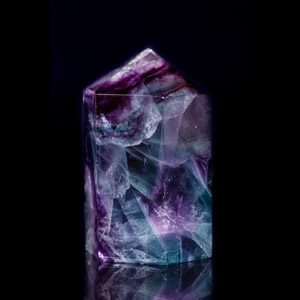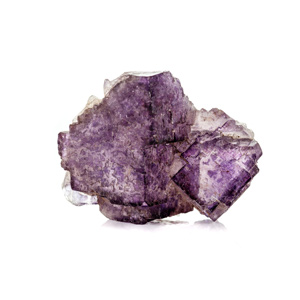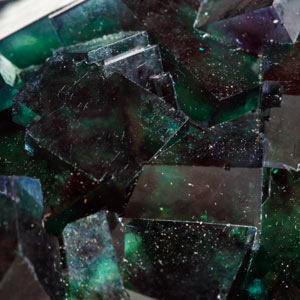fluorite
Fluorite, a mesmerizing gemstone known for its wide range of brilliant colours, owes its name to the Latin word "fluere," meaning "to flow." This moniker is a nod to its historical use as a flux in metallurgy, aiding in the flow of molten metals during smelting processes.
Chemically, fluorite is a calcium fluoride mineral that forms in a cubic crystal system. It is renowned for its stunning variety of colours, which can include shades of purple, green, blue, yellow, and more. These colours result from different trace elements present during its formation.
Fluorite typically occurs in hydrothermal veins and is often associated with minerals like quartz and calcite. Its striking fluorescence under ultraviolet light is a distinctive feature, earning it a place in fluorescent mineral collections.
One interesting property of fluorite is its use in optical devices due to its low dispersion, which minimizes colour aberration. It is also used as a source of fluorine in various industrial applications. Whether appreciated for its aesthetic beauty or utilitarian purposes, fluorite continues to captivate gemstone enthusiasts and mineral collectors worldwide.
Click on the terms in the table below to discover their meaning



Click on the terms in the table below to discover their meaning
| Name | Fluorite |
|---|---|
| Category | Halide mineral |
| Chemical Formula | CaF2 |
| IMA Symbol | Flr |
| Crystal System | Cubic (Isometric) |
| Crystal Habit | Cubes, octahedra, rarely dodecahedra, or combinations, with many other forms; rounded or stepped; nodular, botryoidal, rarely columnar or fibrous; granular, massive |
| Twinning | Commonly interpenetrant or flattened |
| Cleavage | Perfect |
| Fracture | Subconchoidal to uneven |
| Tenacity | Brittle |
| Hardness (Moh's Scale) |
4 (defining mineral) |
| Specific Gravity | 3.175 - 3.184 |
| Diaphaneity | Transparent to translucent |
| Colour | colourless, white, purple, blue, green, yellow, orange, red, pink, brown, bluish black; commonly zoned |
| Streak | White |
| Lustre | Vitreous; dull when massive |
| Optical Class | Isotropic |
| Refractive index | n = 1.433 - 1.448 |
| Birefringence | Absent |
| Dispersion | Rd = 0.007 |
| Pleochroism | Absent |
| Clarity | Type I |
| Notable Varieties | Blue John |
References
Hansen, R. (2022). Gemstones: A Concise Reference Guide. Clayton: CSIRO Publishing.
Mineralogical Society of America. (2005). Fluorite. In J. W. Anthony, R. A. Bideaux, K. W. Bladh, & M. C. Nichols (Eds.), Handbook of Mineralogy. Chantilly, VA 20151-1110, USA: Mineralogical Society of America. Retrieved from https://
The Gemology Project. (2010, September 26). Fluorite. Retrieved from The Gemology Project: http://